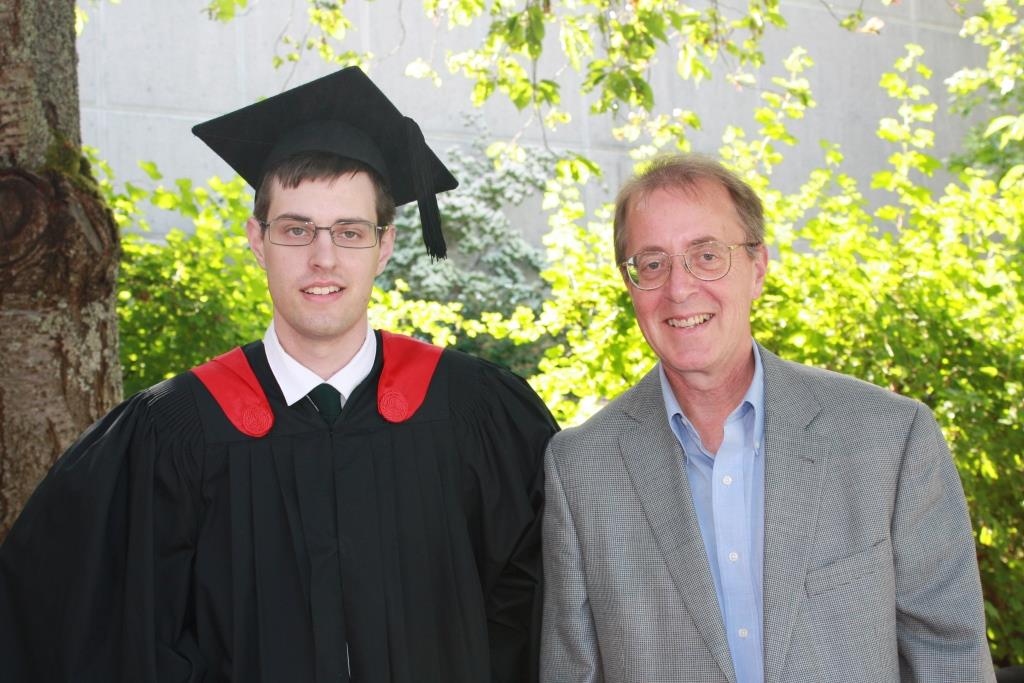My son graduated from university, yesterday. It’s cause for celebration. I’m proud of him, and what he’s accomplished. His graduation also makes me reflect on his journey, a journey I’ve been part of; a collaborative journey.
It seems almost too obvious to mention, yet my son and I are of different generations. Our relationship is both one of father/son and inter-generational.
Now, I’m curious about our future relationship. How will we stay connected, as he moves on? How will our relationship change? And, what can our relationship offer us about inter-general relationships, writ large? On this last question, I continue…
How a young person’s mind is different and why that’s good
On the whole, adults desire things to stay the same. Young people are driven to create a new world. Friction. If you believe, like I do, in the benefits of positive inter-generational interactions, then we need to find ways to reduce that friction. How to do that?
UCLA Clinical Professor of Psychiatry Daniel Siegel, in his book Brainstorm, an “inside-out guide to the emerging adolescent mind”, provides some clues.
To describe the essence of the adolescent’s evolving mind, Siegel uses the acronym ESSENCE (clever guy); see below. And by adolescent, he means 12-24 years of age.
ES: Emotional Spark – honouring those important internal sensations that are more intense during adolescence but serve to create meaning and vitality throughout our lives.
SE: Social Engagement – the important connections we have with others that support our journeys through life with meaningful, mutually rewarding relationships.
N: Novelty – how we seek out and create new experiences that engage us fully, stimulating our senses, emotions, thinking, and bodies in new and challenging ways.
CE: Creative Explorations – the conceptual thinking, abstract reasoning, and expanded consciousness that create a gateway to seeing the world through new lenses.
Siegel’s message is that when we lose our essence, at any age (e.g., “adulthood”), when we stop cultivating the power of novelty seeking, social engagement, emotional intensity, and creative exploration, life can become boring, isolating, dull, and routinized.
And, I’ll add, become the soft underbelly of inter-generational friction!
So, as adults we should face up to that conflict; our loss of essence. When we do, new possibilities for inter-generational connection and collaboration, open up. And that’s a good thing; for our families, communities, organizations, societies…
Connecting with your essence
Did you one day decide to leave behind your essence? I doubt it. I know I didn’t. Rather, interaction by interaction, day by day, part of our essence slips away. And, relationships change as a result.
Perhaps, if as adults we can recapture some of our vital essence, the gap between the generations would lessen? (Of course, reducing the gap is a two-way street. Siegel offers ideas for the younger generation, too.)
With intention, we can apply ourselves to re-connecting with ourselves, our essence.
I love the idea of ESSENCE, as a reminder, as a way to foster sustaining relationships. I hope I stay in touch with my essence. For me. For my son. For other’s sake.


Congratulations, Kevin! Nice picture of father and son. I recognize the tree from our photos on Tuesday’s Convocation Day with Eva.
Thanks Soren. Congratulations, Eva! Funny about the tree – maybe the most photographed tree in Victoria? 🙂